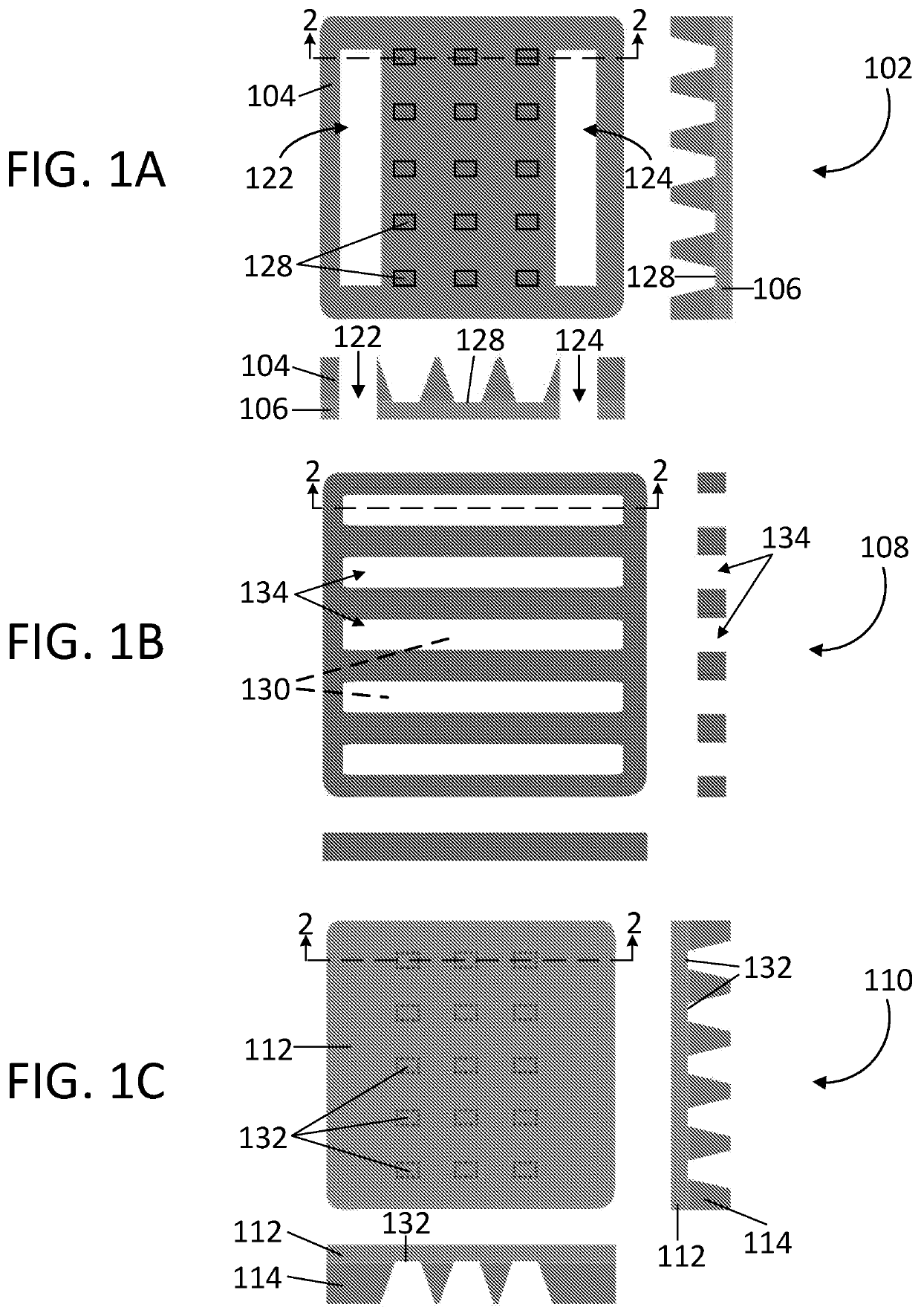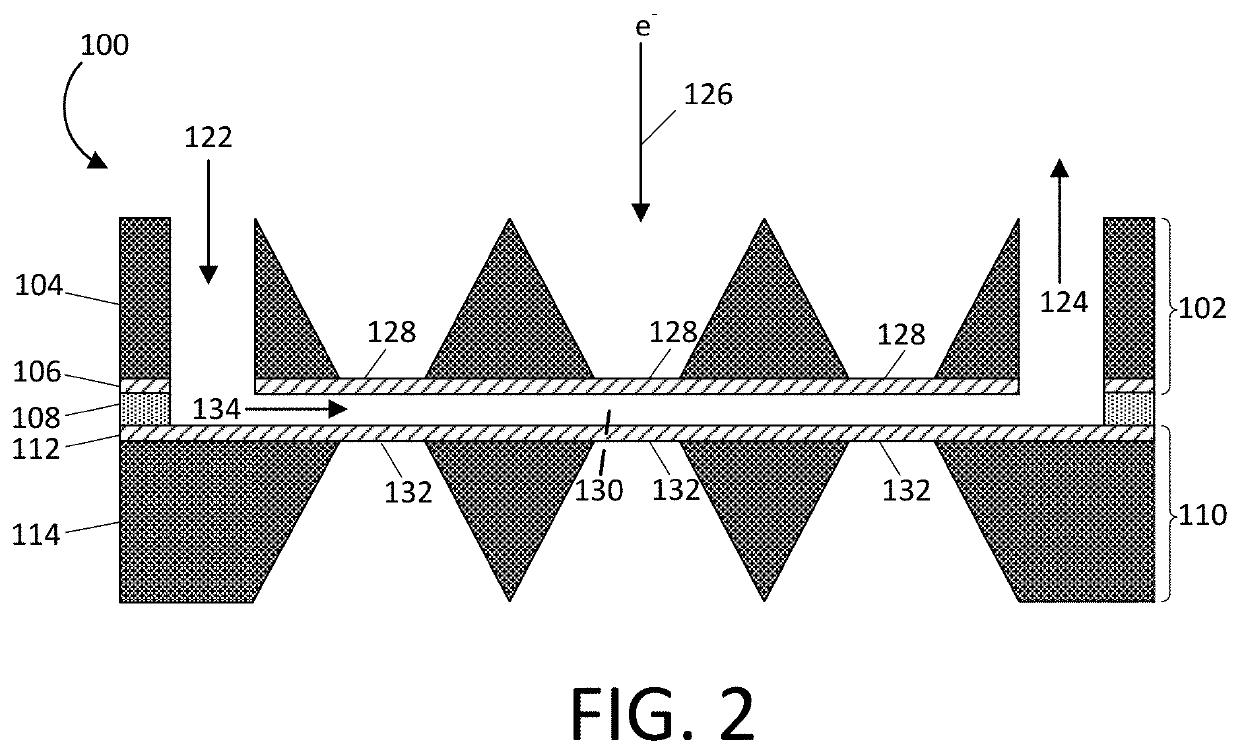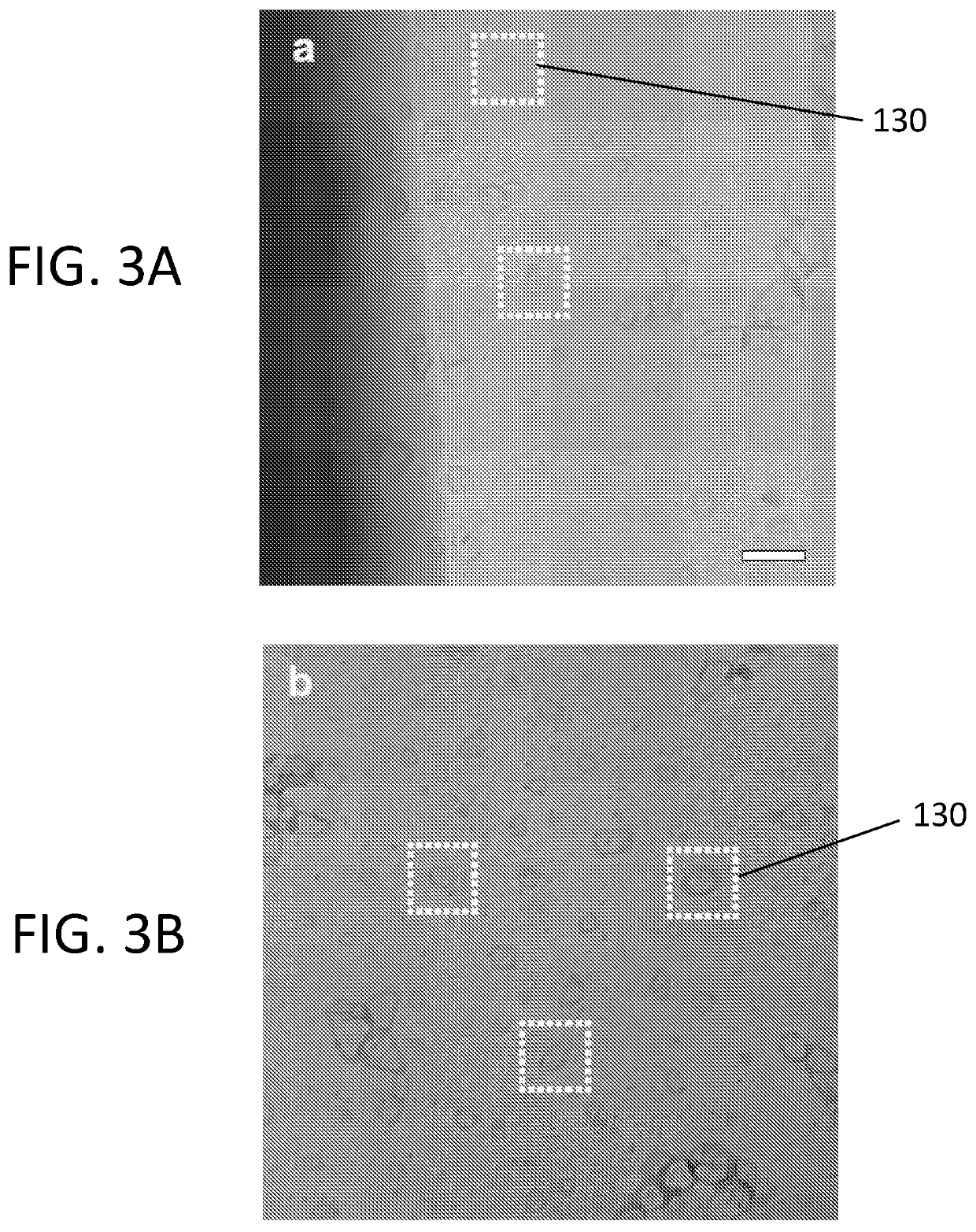Freezable fluid cell for cryo-electron microscopy
a fluid cell and cryo-electron technology, applied in the field of cryo-electron microscopy, can solve the problems of inconsistent background noise signals across the sample, blotting methods for creating thin samples, and vitrified biological samples which were often poorly controlled
- Summary
- Abstract
- Description
- Claims
- Application Information
AI Technical Summary
Benefits of technology
Problems solved by technology
Method used
Image
Examples
Embodiment Construction
[0034]Referring first to FIGS. 1A, 1B, 1C, and 2, one exemplary embodiment of a freezable fluid cell system 100 according to the present disclosure is shown. The freezable fluid cell system 100 comprises a top chip 102, a spacer 108, and a bottom chip 110. In each of FIGS. 1A, 1B, and 1C, a top view along with a respective pair of cross sectional side views for each section (top, bottom, spacer) of the freezable fluid cell system 100 is illustrated.
[0035]In FIG. 1A, the top chip 102 of a freezable fluid cell system 100 is shown. The top chip 102 includes a first structural member 104 joined to a first electron transparent member 106. The top chip 102 has at least one inlet port 122 and at least one exit port 124 that extends through the first structural member 104 and the first electron transparent member 106 such that at least one channel 134 within the spacer 108 (described in more detail below and show in FIGS. 1B and 2) can remain in fluid communication with the inlet port 122 a...
PUM
| Property | Measurement | Unit |
|---|---|---|
| thickness | aaaaa | aaaaa |
| thickness | aaaaa | aaaaa |
| thickness | aaaaa | aaaaa |
Abstract
Description
Claims
Application Information
 Login to View More
Login to View More - R&D
- Intellectual Property
- Life Sciences
- Materials
- Tech Scout
- Unparalleled Data Quality
- Higher Quality Content
- 60% Fewer Hallucinations
Browse by: Latest US Patents, China's latest patents, Technical Efficacy Thesaurus, Application Domain, Technology Topic, Popular Technical Reports.
© 2025 PatSnap. All rights reserved.Legal|Privacy policy|Modern Slavery Act Transparency Statement|Sitemap|About US| Contact US: help@patsnap.com



